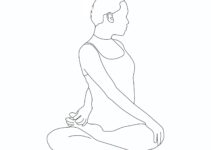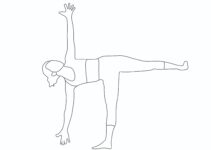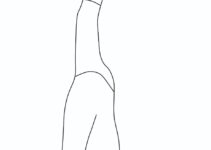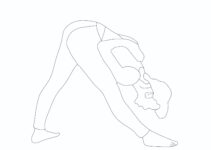Meaning of Makarasana
Makarasana consists of two words: Makar means ‘crocodile’, and asana means ‘yoga pose’. It is pronounced as ‘Mah-car-ah-SUN-uh’. It is one of the finest relaxation yoga poses practised after yoga drills for body restoration. The practice of it helps to relax the body and mind. If it is done through proper technique, its benefits will enhance manifolds. We will also discuss here the precautions and contraindications of crocodile pose.
Steps-How to do step-by-step
- Lie down flat, with chin, chest and abdomen touching the ground.
- Spread your legs about 40 cm apart and place them flat so the heels face each other and the toes point outward.
- Now, keep your right palm above the left palm just beneath your forehead.
- Slowly close your eyes and relax your whole body.
- Do normal breathing and maintain the position as long as possible.
Health benefits
- It helps to make your nervous system de-stress, refresh and rejuvenate.
- It is one of the best relaxation yoga poses.
- It is beneficial in the case of soothing the spine as well as the back region.
- It is beneficial in the case of asthma and dyspepsia.
- It helps keep the spine flexible and provides deep relaxation.
- Removes mental and physical fatigue.
- It helps to open the Svadhisthana Chakra, which is the hub of desire and the primal urge and is also related to spiritualism.
- It is beneficial in case of ailments such as slipped disc, spondylitis, and sciatica.
- The patients should make it a practice of hypertension, stress and mental disorders.
- It stretches the muscles of the buttocks, legs, and back of the arms and legs.
- Basically, it is the pose to combat stress.
- The primary motto of the pose is to release strain caused by other poses while practising.
Important facts
- It is one of the best stress-relieving yoga poses.
- Level of difficulty: Beginner
- Also known as Crocodile pose
- Target: Chest & Back
- The nervous system is fully engaged.
- Style: Hatha Yoga
- Strengthens: Shoulders, Arms and Chest
- Stretches: Arms, Legs and Buttocks
- Duration: Approx. 5 minutes
- Therapeutically, it is suitable for fatigue, high blood pressure, cardiac ailments, insomnia and anxiety.
- Anatomically, it works on the lower back.
Contraindication
- It shouldn’t be done in case of pregnancy
- Back injury
- Neck injury
- inflated lumbar curves
- Psychological issues
- It shouldn’t be practised if blood pressure is too high.
- It also shouldn’t be practised if there are some abdominal injuries.
Precautions
- Try to make your body more relaxed and calm to extract maximum benefits.
- In case of neck injury, one should keep the folded blanket.
- If you are experiencing something, don’t wander your mind; better to allow these to pass.
- Ensure that your spine is straight.
- Try to skip body movements.
- Eyes should be closed.
Preparatory pose
- Bhujangasana
- Shalbhasana
- Dhanurasana
- Ustrasana
- Salamba Sarvangasana
Follow up pose
- Balasana
- Savasana
- Shashkasana
- Padmasana
References
- Gheranda Samhita
- Yoga and Kriya by Swami Satyananda Saraswati
Modifications and variations
Lie flat on the stomach with the head and shoulders raised off the ground. The head is cupped in the palms with the elbows resting on the floor. Relax the whole body and close your eyes. Be aware of the natural and rhythmic breathing pattern.





